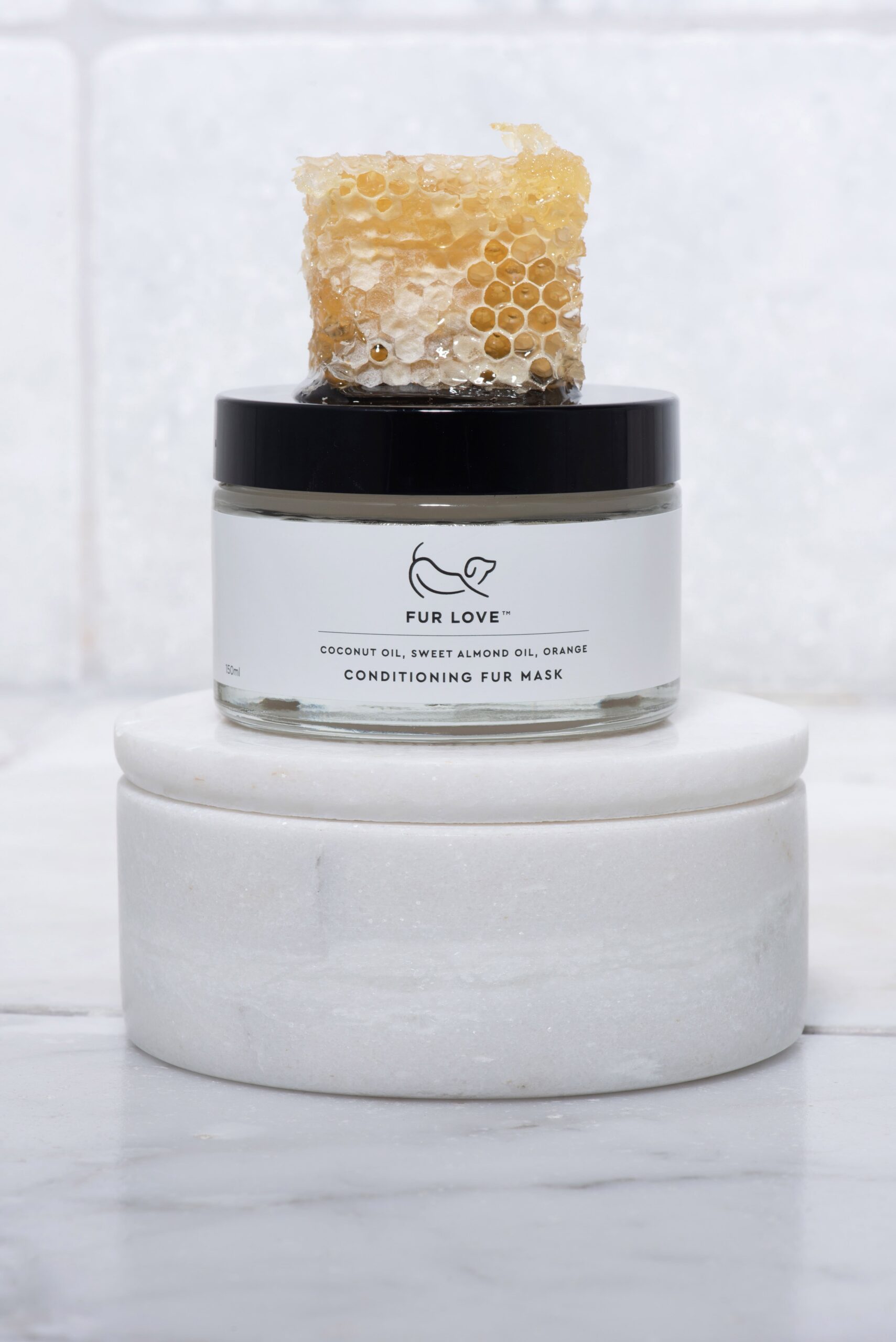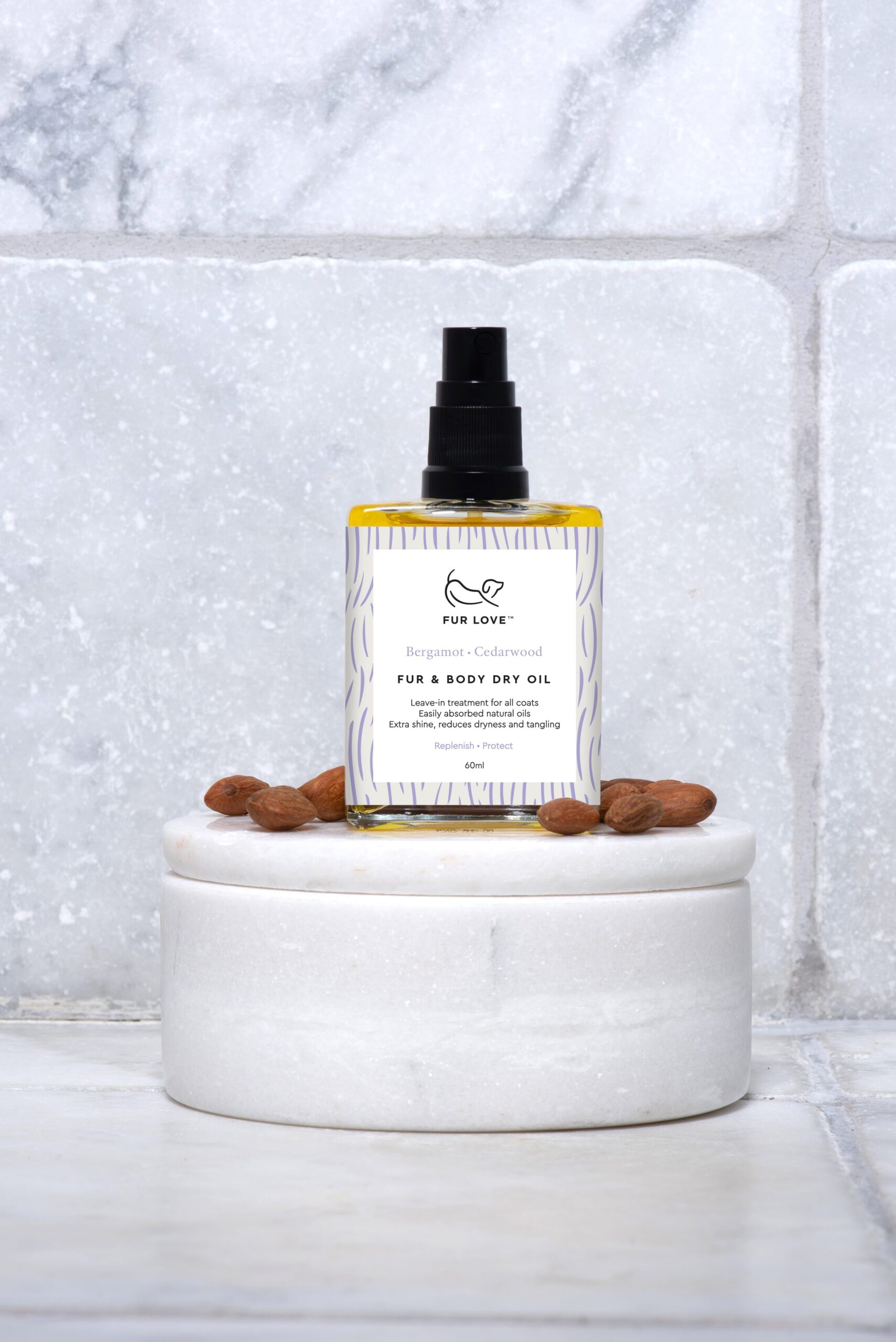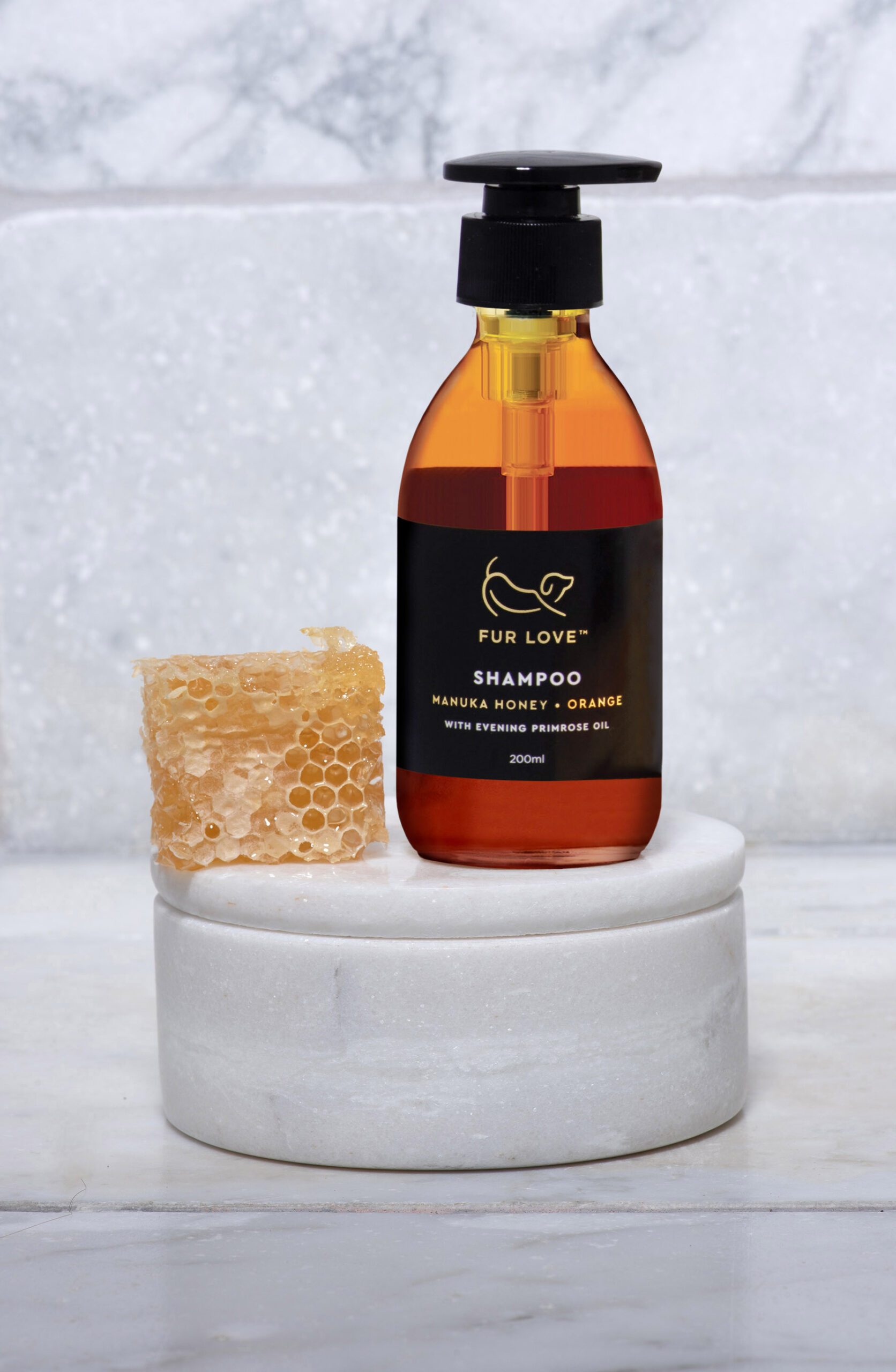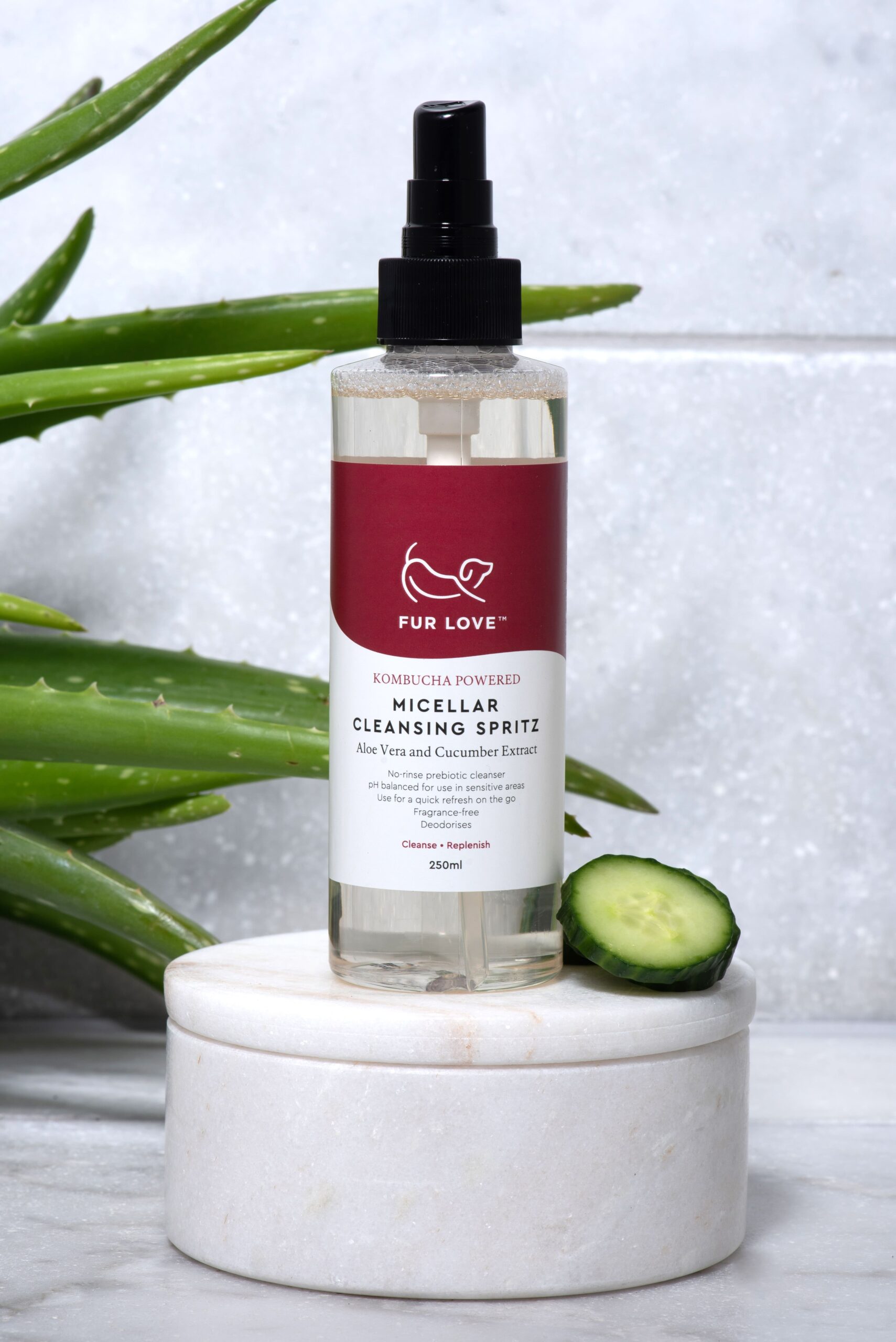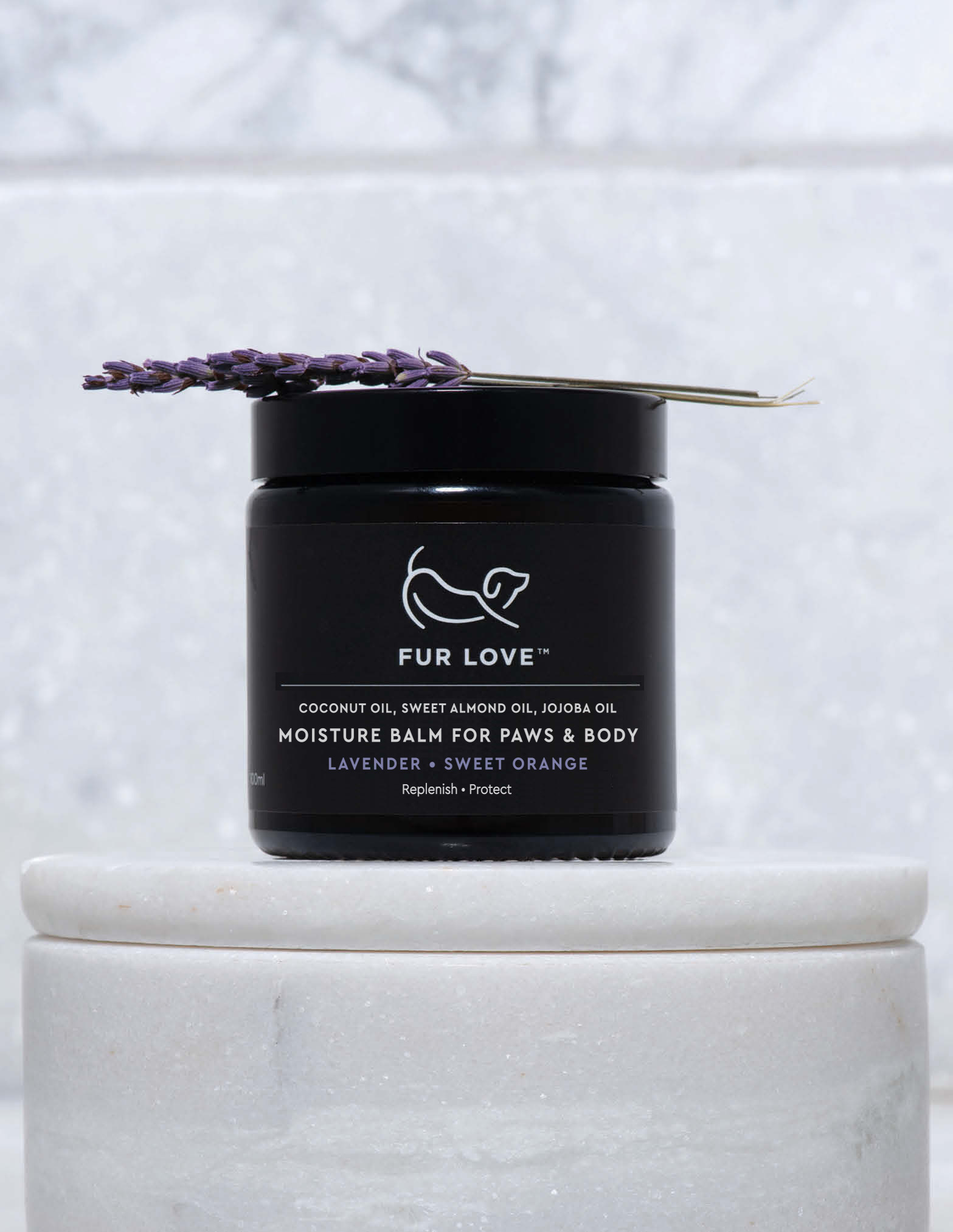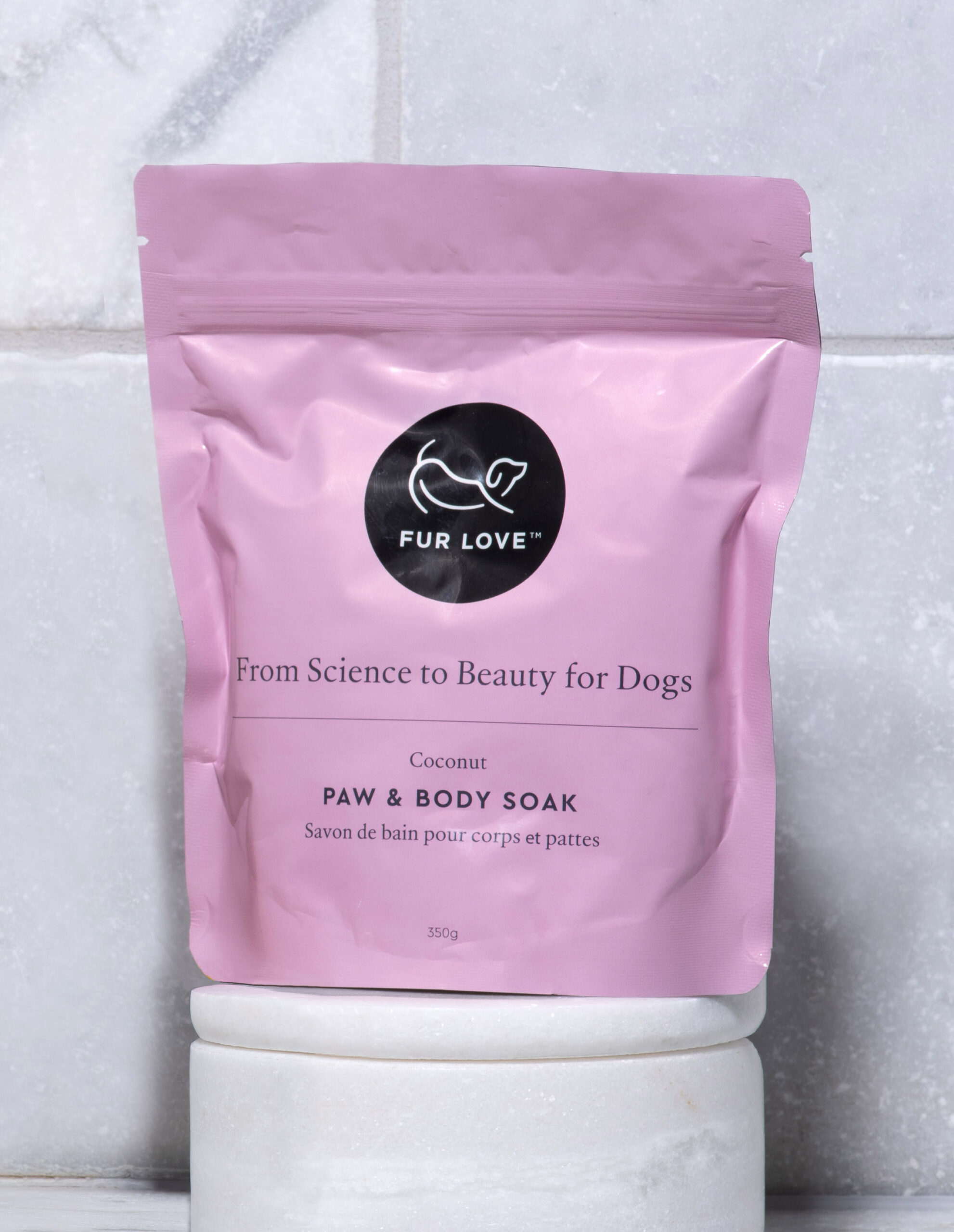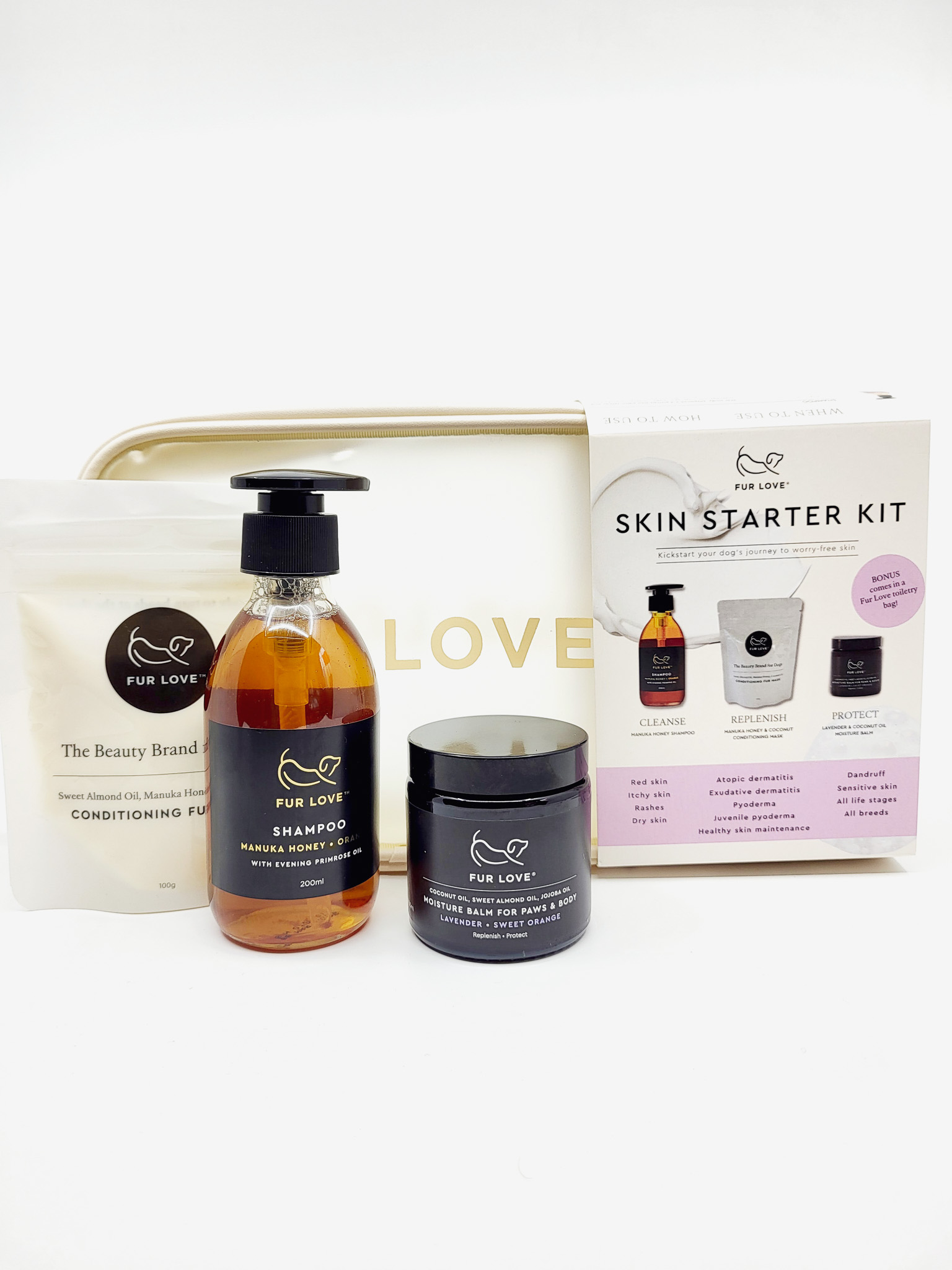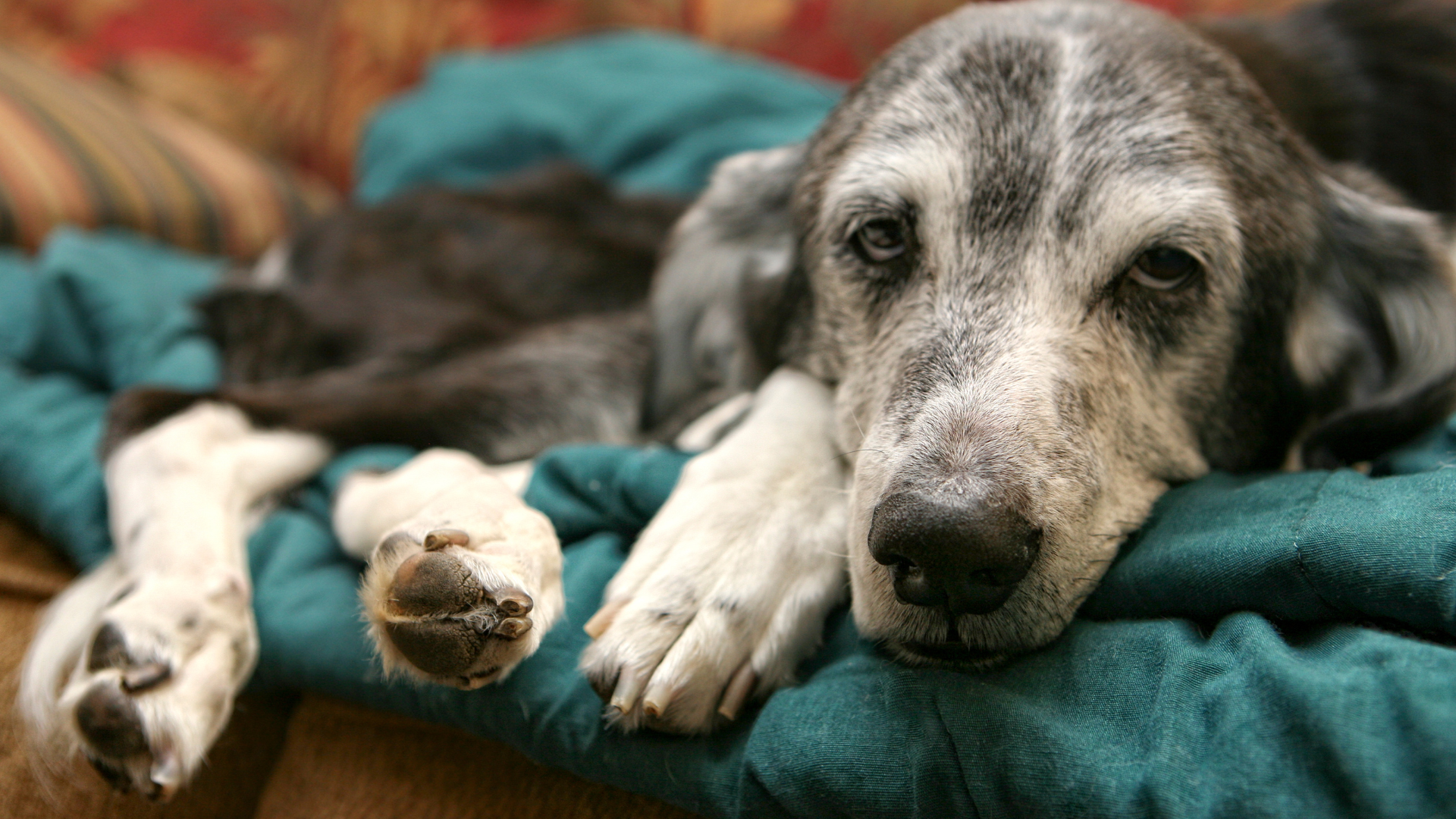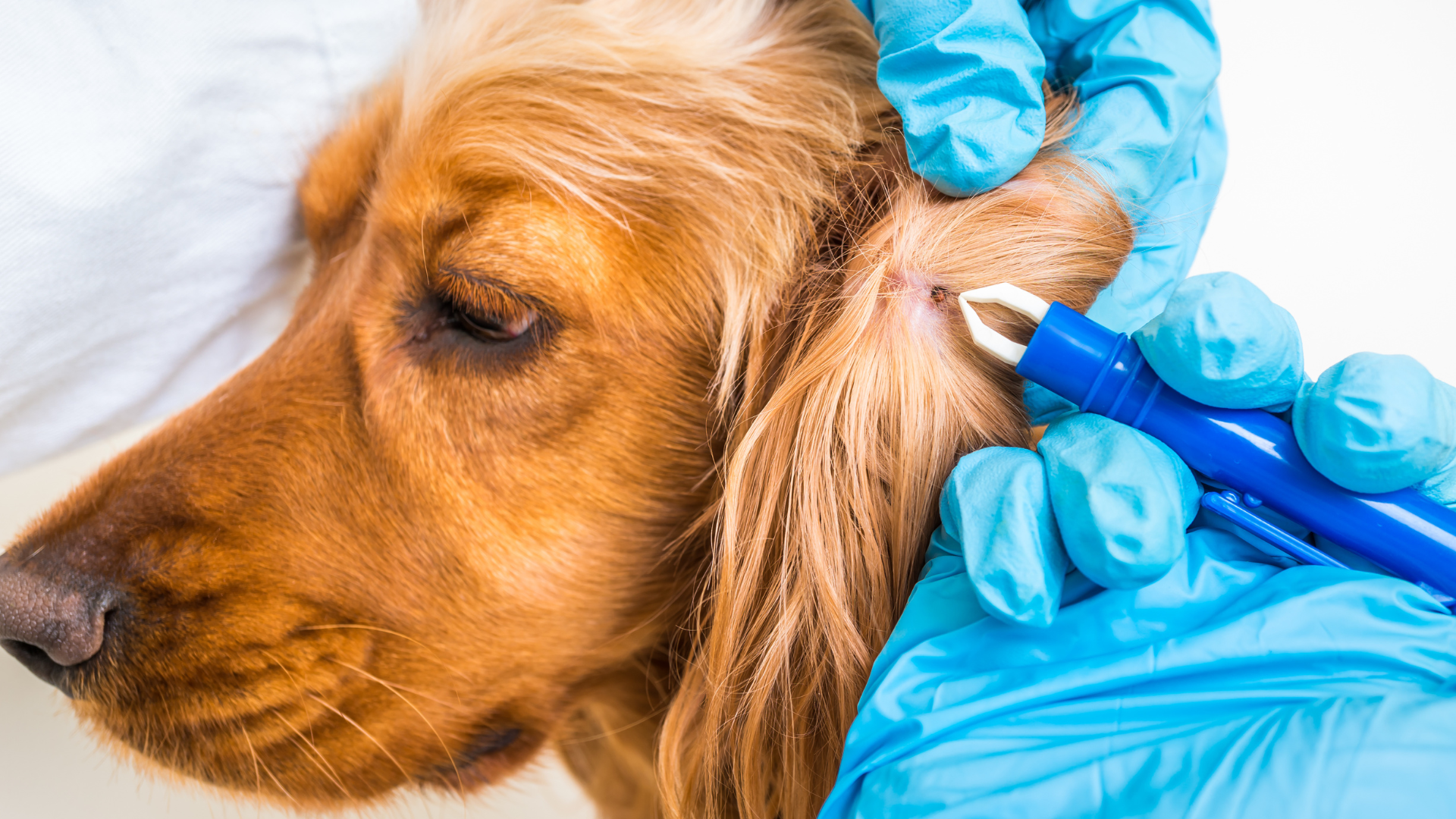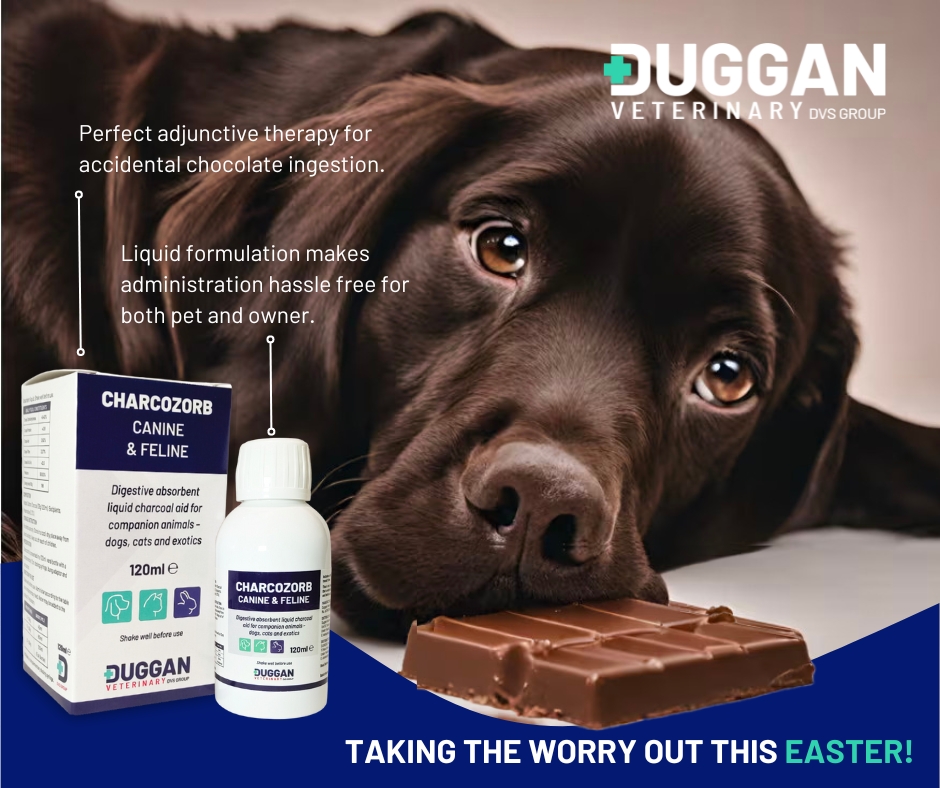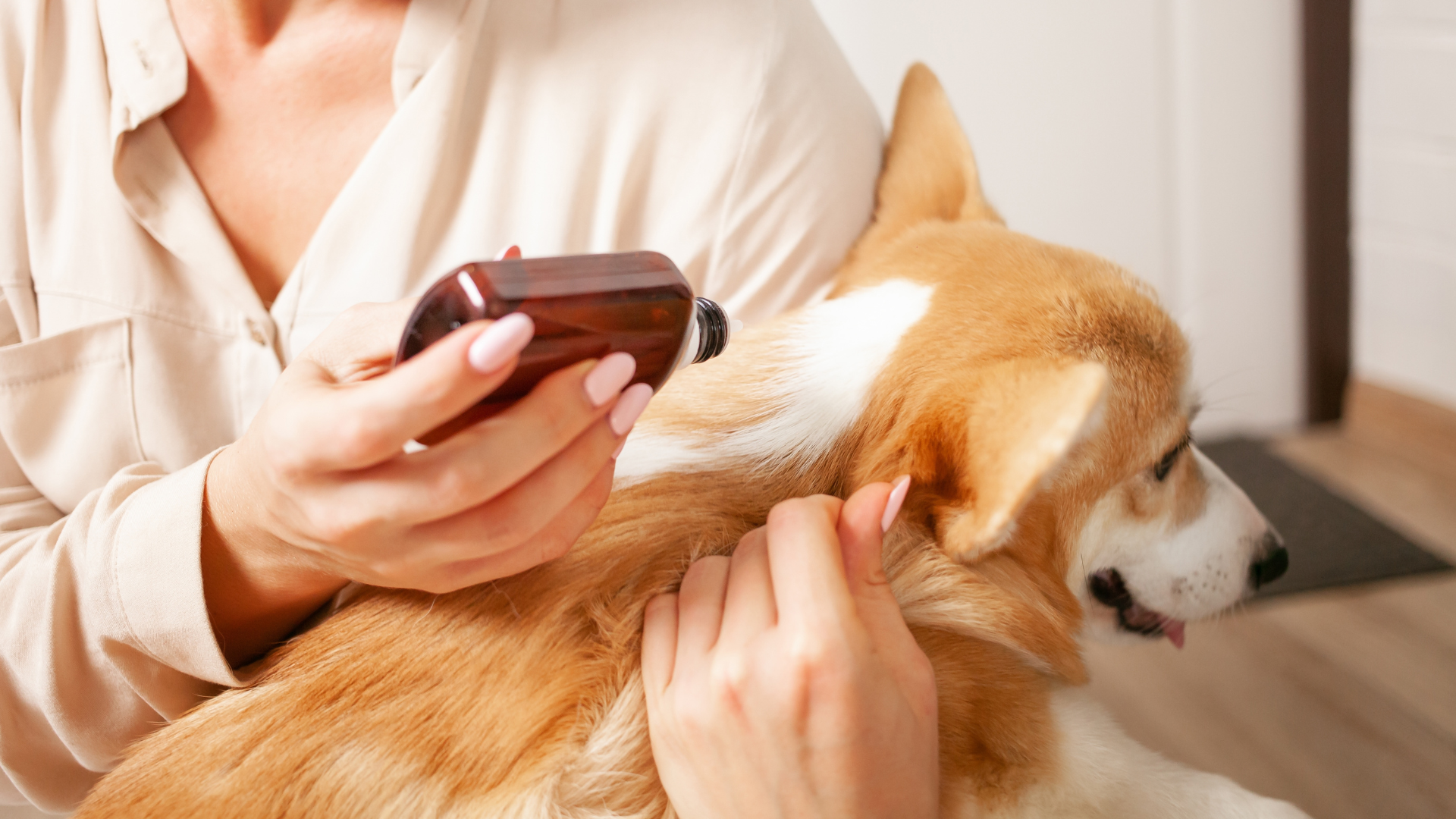
By Dr Ineke Meredith, Founder of Fur Love, MBChB, Melanoma and Breast Surgeon and Dr Amaury Briand, DVM
Traditionally, cosmetics are considered to be powders, creams, lipsticks, concealers and eyeshadows designed to enhance personal appearance. Beautification. It is because of this multi-billion-dollar beauty industry, with its investment in research, that we now have increasingly sophisticated knowledge of the skin barrier and its physiology, in addition to new technology and ‘actives’ that improve its function.
Dermocosmetics has evolved as a result and such products are widely used and recommended by (human) dermatologists to support pharmacological treatment for conditions such as xerosis, acne, psoriasis and atopic dermatitis (AD). In short, dermocosmetics is part of the therapeutic arsenal for many skin disorders.
Similarities between human and animal diseases are valuable bidirectional sources of knowledge from which one can improve the understanding of pathogenesis and treatment. These similarities exist strongly in AD with canine AD (CAD) proposed to be the naturally occurring animal model of human AD (HAD).1 CAD affects up to 30% of dogs worldwide2 and is one of the most common reasons to visit a companion animal vet. For both canines and humans, atopic disease is becoming increasingly common, which is probably a result of both environmental and lifestyle changes.
Understanding canine atopic dermatitis
The skin barrier plays a central role in the pathogenesis of CAD.3 One of the most important functions of the skin is that it provides a barrier between the environment and the body. In its ‘healthy’ state, it is almost impermeable to water. In CAD, abnormalities in proteins, lipid organisation in the stratum corneum and enlargement of intracellular spaces result in excessive water loss, desiccation, and penetration of exogenous substances including external allergens. Furthermore, allergen exposure can worsen this disorganisation of lipids in the stratum corneum, further impacting the 2 intracellular spaces. The resultant trans-epidermal water loss (TEWL) is another sign of the impairment of this barrier between the internal and external environments. For atopic dogs, measured TEWL is higher in both lesional and non-lesional areas than that seen in healthy dogs.4
The benefit of moisturisation for atopic dermatitis
In HAD, moisturisation is pivotal, and regardless of the severity of the disease, it is the mainstay of treatment. It is established to have a steroid-sparing effect, and it has been demonstrated to be just as effective as steroid therapy in mild to moderate skin flares, resulting in a lower dependence on medication.5 6 This is due to the direct effect that moisturisation has on the structural layers of the skin. In more recent studies in both children and adults, the ‘proactive’ application of moisturisation results in lengthening periods between skin flares, again reinforcing its importance in maintenance.7 8
Given the similarities in pathology for both HAD and CAD, it is reasonable to conclude that AD in dogs should respond to the same treatment principles as HAD. However, in dogs, lack of clarity around simple things like frequency of washing means that the introduction of skin care routines in dogs who would benefit from it, is out of the ordinary. Furthermore, it is unclear which dermocosmetics on the market might be effective, and how and when these should be administered.
A ‘cosmetic’ need in dogs
So, what do we know about the role of dermocosmetics in dogs and how can they exist in the veterinary therapeutic arsenal? One might guffaw at the idea of ‘cosmetic’ need in dogs, but dogs who nibble and chew excessively might have matted, poorly kept coats; their constant licking leads to malodour and they can develop bald patches which are distressing for dog owners. The simple application of a carefully chosen shampoo, and its immediate impact, can be reassuring for an owner who rightly or wrongly believes that it is normal for dogs to nibble and that a dog should not be washed more than once every 3 months.
For canine skin which requires veterinary attention, dermocosmetics should form part of the therapeutic toolbox for a wide range of these disorders. These include xerosis, seborrhea and other seborrheic conditions, hyperkeratosis, skin infections, hair loss, 3 and finally allergic or irritated skin.4 Although dermocosmetic products do not have a ‘therapeutic’ function per se, they have many benefits in skin diatheses and in particular for allergic skin disease where the body of evidence for efficacy is the strongest. Specifically for CAD, the use of dermocosmetics portends one of the key pillars of management: skin rehydration and restoration of the skin barrier defect. It is not the role of this article to discuss the intricacies of dermocosmetics in each disorder, but rather to provide an overview of the application of dermocosmetics in dogs.
Studying the benefit of moisturisation in dogs with AD
There are a handful of studies which examine the benefit of moisturisation in dogs with AD. Two of these studies demonstrated that daily moisturisation in dogs with AD and high TEWL resulted in increased SC thickness and improved hydration (Fig. 1). 3 9 The constituents of these moisturisers include propylene glycol and combinations of cholesterol, ceramides and fatty acids.
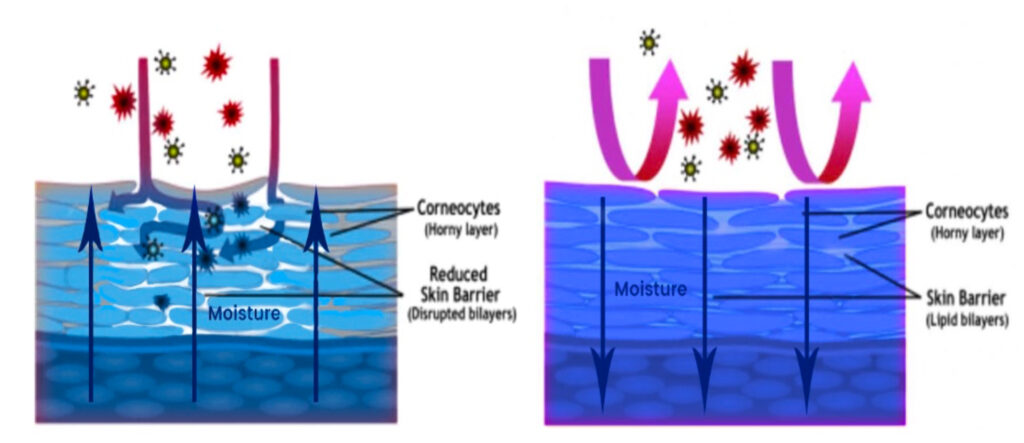 Fig 1. On the left is a schematic diagram of a skin barrier belonging to patient with CAD. The stratum corneum is seen to have reduced lipid bilayers within the stratum corneum resulting in widened extracellular spaces. On the right is the same dog who has had moisturising treatment for 28 days. There is replenishment of the stratum corneum and restoration of the extracellular spaces preventing penetration of exogenous material including allergens.
Fig 1. On the left is a schematic diagram of a skin barrier belonging to patient with CAD. The stratum corneum is seen to have reduced lipid bilayers within the stratum corneum resulting in widened extracellular spaces. On the right is the same dog who has had moisturising treatment for 28 days. There is replenishment of the stratum corneum and restoration of the extracellular spaces preventing penetration of exogenous material including allergens.
The topical forms of dermocosmetics available for use in dogs
The mode of application can be a potential challenge for dog owners who might find the idea of weekly cleansing particularly onerous. It is also a potential challenge for the veterinarian to offer a solution that the owner is not happy to use. For this reason, it is important to offer different options.
Dermocosmetics for canines (and humans) exist in many different topical forms: wipes and pads, spot-on treatments, patches, sprays, lotions, foams, gels, balms, powders, and of course, shampoos. It is probably the shampoo which is the most beneficial and it is uniformly recommended for all dogs. The mechanical effect of a bath removes dirt, debris, crusts and other loose areas of skin. It is the simplest product to apply over hairy skin and the effect is usually immediate. Shampoos are becoming increasingly sophisticated, but across the board, there is increasing scientific input into the choice of evidence-based ingredients.
To date, research around the application and use of topical products has centred around the reduction of symptoms and improvement in skin lesions during an acute episode. We lack good evidence for long-term use of these products, and the ability of these products to maintain skin health and reduce flare-ups. However, it is reasonable to conclude that if these microscopic changes in the quality of the skin barrier are maintained through regular moisturising washes and ointments, then vulnerability to allergens and flare-ups would be less frequent.
One recent study has in fact reported a longer lasting remission when moisturising treatments are combined with the administration of Lokivetmab.10 Whilst this is likely to be the direct effect of moisturisation on the integrity of the skin barrier, cleansing and moisturising may play a role in the regulation of the skin flora. It is known that the microbial diversity found on the skin of atopic dogs is reduced with an increase in populations of Malassezia sp. and Staphylococcus sp.11
Treatment ‘escape’
Treatment ‘escape’ is not an uncommon phenomenon. This might be where a patient, previously well controlled on Lokivetmab, experiences a reduction in efficacy, and in some cases, this is due to ‘superinfection’ (superficial pyoderma or Malassezia dermatitis). Regular cleansing and moisturising using appropriate dermocosmetics, with or without antiseptic use, is likely to aid the regulation of microbial flora and should be recommended even with systemic medication.
The importance of skin care maintenance
Skincare is relevant for even dogs with ‘normal’ skin. Just like humans, there exists a wide variety of skin phenotypes influenced by the combination of race, genetics, and external factors such as environmental exposures, climate, diet and lifestyle. Due to 5 this heterogeneity, ‘normal’ becomes less helpful, and just like humans, it might be more useful to consider the skin or coat as dry, oily, sensitive or irritable. Nonetheless, for this spectrum of ‘normal,’ maintenance is still very important. A focus on maintaining hygiene and reducing odour is a good goal. Such a routine might consist of regular cleansing (for example, a shampoo once a week), wiping high-risk areas (perioral, skin folds and interdigital spaces) and moisturisation. One must not forget that sunscreen is also important in dogs although consumers should be advised to look for high SPF products that block both UVA and UVB.
As we observe the humanisation of dogs and their increasing importance and place in the modern family, it is easy to assume that a ‘cream’ for dogs is another part of this phenomenon. Dogs have been outdoor creatures for centuries. Twenty years ago, they barely took a bath. Do they need ‘skincare’? The answer is yes. Regularity of this care will make a difference for dogs who need it, and again this is where the human beauty industry can help. Any consumer of human skincare knows that routines matter. Good skin does not happen overnight, and persistence eventually pays off.
References:
- Outerbridge CA, Jordan TJM. Current Knowledge on Canine Atopic Dermatitis. Adv Small
- Marsella R, De Benedetto A. Atopic Dermatitis in Animals and People : An Update and Comparative Review. Vet. Sci. 2017;4(37)
- Panzuti P, Vidémont E, Fantini O, Fardouet L, Noël G et al. A moisturizer formulated with glycerol and propylene glycol accelerates the recovery of skin barrier function after experimental disruption in dogs. Vet Dermatol. 2020;31(5):344-e89
- Bensignor E, Vidémont-Drevon E. Guide pratique de dermo-cosmetique vétérinaire. Med’Com. July 2016. 6
- Thomsen SF. Atopic Dermatitis: Natural History, Diagnosis, and Treatment. ISRN Allergy. 2014. httpp://dx.doi.org/10.1155/2014/354250
- Simpson EL. Atopic dermatitis: a review of topical treatment options. Current Medical Research and Opinion. 2010;26(3):633-640
- Tiplica GS, Kaszuba A, Malinauskiene L, Konno P, Boralevi F, et al. A prevention of flares in children with atopic dermatitis with regular use of an emollient containing glycerol and parahin: A randomized controlled study. Pediatr Dematol. 2017;34(3):282-289
- Angelova-Fischer I, Rippke F, Richter D, Filbry A, Arrowitz C, et al. Stand-alone emollient treatment reduces flares after discontinuation of topical steroid treatment in atopic dermatitis: a double-blind, randomized, vehicle-controlled, left-right comparison study. Acta Derm Venerol. 2018;98(5):517-523
- Jung JY, Nam EH, Park SH, Han SH, Hwang CY. Clinical use of a ceramide-based moisturizer for treating dogs with atopic dermatitis. J Vet Sci. 2013;14(2):199-205
- Bensignor E, Videmont E. Weekly topical therapy based on plant extracts combined with lokivetmab in canine atopic dermatitis. Vet Dermatol. 2022 Feb;33(1):68-e22
- Rodrigue Hohmann A, Patterson AP, Diesel A, Lawhon SD, Ly HJ, et al. The skin microbiome in healthy and allergic dogs. PLoS One. 2014;9:e83197
![]()

Fur Love, is a canine dermocosmetic company dedicated to maintaining skin care routines for dogs with canine atopic dermatitis. It is sold through vet clinics in New Zealand and Australia and is now available in the UK through NVS.

Dr Ineke Meredith, MBCh, Melanoma and Breast Surgeon, founder of Fur Love
Dr Ineke Meredith, MBCh, is a (human) general surgeon with subspecialisation in skin cancer and breast cancer and reconstruction. She works between New Zealand and Paris. In 2020, she launched Fur Love, a canine dermocosmetic company dedicated to maintenance skin care routines for dogs with canine atopic dermatitis.
Dr Amaury Briand, DVM
Dr Amaury Briand is a specialist veterinary dermatologist working at Advetia Hospital in France. He has published extensively on canine atopic dermatitis including the consensus guidelines for the multimodal management of canine atopic dermatitis.
The article was originally posted in The Cube magazine, June 2024 issue. Click here to read the magazine.
